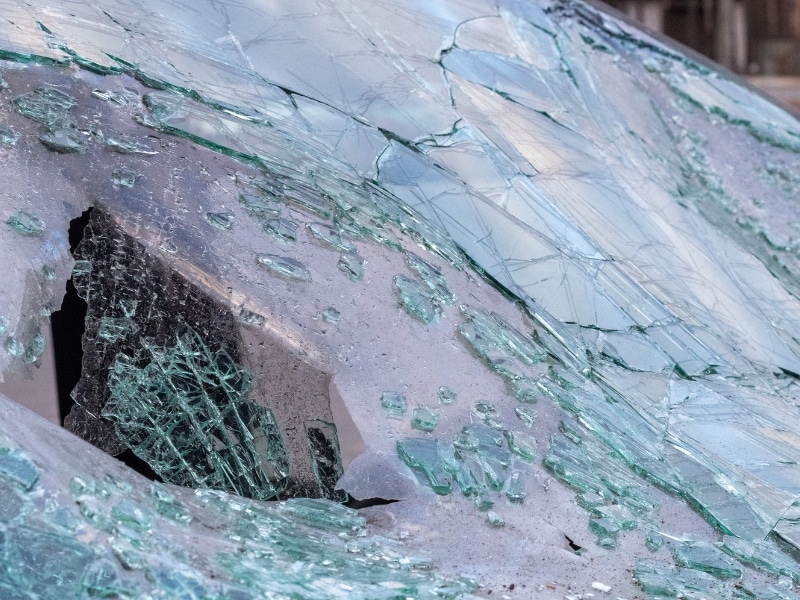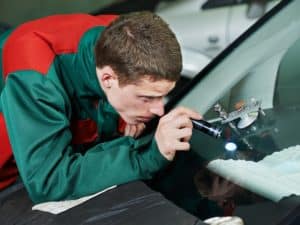Your car’s windscreen is more than just a piece of glass—it plays a crucial role in structural integrity and road safety. While minor damage like small chips or cracks can often be repaired, some windscreen issues are too severe and require full replacement. Knowing when to replace rather than repair your windscreen can help prevent safety risks and costly repairs in the future.
This guide explains which types of windscreen damage require full replacement, why driving with a damaged windscreen is dangerous, and how professionals assess windscreen issues. If you’re unsure whether your windscreen needs repair or replacement, read on to learn what experts recommend.
What types of windscreen damage can be repaired?
Not all windscreen damage requires complete replacement. In many cases, minor damage can be fixed with professional repair techniques. Here are some common windscreen issues that can usually be repaired:
Repairable windscreen damage:
- Small chips: If a chip is smaller than a 10-cent coin and not near the driver’s line of sight, it can often be repaired.
- Short cracks: Cracks under 3 cm in length can sometimes be fixed if they are not spreading.
- Star or bullseye chips: These circular cracks caused by stone impacts can often be filled and stabilised.
- Surface scratches: Shallow scratches that don’t penetrate the glass layers can be polished out.
Important: Repairs are only possible if the damage has not spread or affected the structural integrity of the windscreen. If left unattended, even small chips can turn into large cracks that require full replacement.
Which windscreen damages require full replacement?
Some types of windscreen damage cannot be repaired and will need complete replacement. Here’s when replacement is necessary:
Type of Damage | Why Replacement is Needed |
Large cracks (over 3 cm) | Cracks can spread quickly and weaken the entire windscreen. |
Damage in the driver’s line of sight | Repairs may cause distortions, affecting visibility and safety. |
Edge cracks | Cracks along the edges weaken structural integrity and often spread. |
Multiple chips or cracks | Too many points of damage make the windscreen unstable. |
Deep penetration or shattered glass | Severe impacts compromise safety and require a full replacement. |
Cracks reaching the glass layer (lamination damage) | If the inner safety layer is affected, repairs are not effective. |
If your windscreen has any of the above damages, it’s best to replace it as soon as possible to maintain safety on the road.
Why is it unsafe to drive with windscreen damage?
Even a tiny crack can pose serious risks if left unrepaired. To fully grasp why maintaining a strong windscreen is essential, it’s crucial to understand how Australian Design Rules improve vehicle safety features. These regulations play a vital role in setting strict safety standards for automotive glass, ensuring durability and impact resistance. By adhering to these standards, manufacturers enhance the overall structural integrity of vehicles, directly impacting passenger safety. Here’s why driving with a damaged windscreen, which fails to meet these rigorous standards, is particularly dangerous:
- Reduced visibility: Cracks and chips can distort vision, making it harder to see road hazards.
- Weakened structural integrity: Your windscreen supports the roof. In an accident, a weak windscreen increases the risk of roof collapse.
- Higher risk of shattering: Sudden temperature changes, vibrations, or minor bumps can cause the windscreen to break completely.
- Compromised airbag deployment: Windscreens help airbag deployment. A damaged windscreen may not support airbags properly, reducing their effectiveness in an accident.
If your windscreen is compromised, replacing it promptly ensures your safety and prevents further damage.
When should you replace your windscreen instead of repairing it?
Sometimes, even minor damage may warrant a full replacement. Not sure if a repair is enough? Learn when you need mobile windscreen repair instead of just a simple chip fix. Here are key situations when replacing your windscreen is the safer option:
- Crack or chip in the driver’s vision area – Even after repair, distortions may remain, affecting visibility.
- Damage near the edges of the windscreen – Edge damage weakens the entire windscreen structure.
- Damage extending through multiple layers of glass – If the crack has penetrated past the outer layer, repairs won’t be effective.
- Cracks that keep spreading – If a crack grows despite previous repairs, replacement is the best solution.
- Windscreen damage affecting roadworthiness – In Australia, extensive windscreen damage can result in a defect notice during a vehicle inspection.
If you notice any of these signs, replacing your windscreen is the safest choice.
Can insurance cover a full windscreen replacement?
Many insurance policies cover windscreen replacement, but coverage depends on your policy type. Here’s what to check:
Insurance Type | Windscreen Cover Details |
Comprehensive Insurance | Often covers windscreen replacement, sometimes with no excess |
Third-Party Insurance | Generally does not cover windscreen damage. |
Windscreen-Specific Add-On Cover | Some insurers offer an add-on for windscreen repairs and replacement. |
How to check if you’re covered:
- Review your policy documents for windscreen coverage.
- Contact your insurer to confirm if they cover complete replacement.
- Ask if you need to pay an excess or if you qualify for a no-excess claim.
How do professionals assess windscreen damage?
Certified windscreen technicians follow a detailed assessment process to determine whether repair or replacement is needed. Here’s how they evaluate the damage:
Professional windscreen assessment process:
- Visual inspection – Technicians check the location, depth, and spread of damage.
- Size measurement – If the chip is smaller than a 10-cent coin, repair may be possible.
- Structural integrity test – If the crack affects the laminated glass, replacement is recommended.
- Safety evaluation – If the damage is in the driver’s line of sight or near the edges, replacement is necessary.
- Final recommendation – Based on findings, the technician advises on the best course of action.
Conclusion
Driving with a damaged windscreen isn’t just an inconvenience—it’s a safety risk. While minor chips and small cracks can be repaired, larger cracks, edge damage, and shattered glass require complete replacement.
For multiple windscreen chips or cracks, or if you’re unsure about repair vs. replacement, consult GRS Windscreen PRO.



